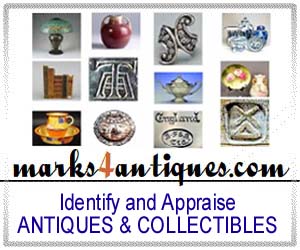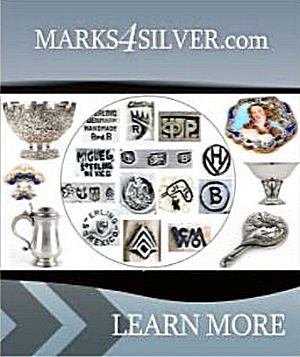ANTIQUE SHEFFIELD SILVER-PLATE:
A Historical Brief and How to Recognize it
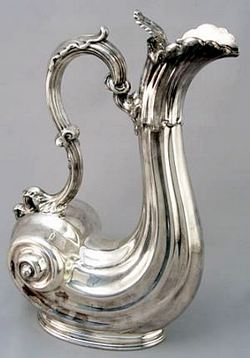
It was about 1743 when Thomas Boulsover discovered that an ingot of copper could be given a coating of silver by means of fusion by heat, and that the two metals united could be worked into shape as one. Most importantly, the copper always retained its silver covering, however thinly it was rolled. At first, Boulsover used plated copper for making buttons, boxes and other small wares. However, in the 1750s and 1760s the new process was taken up by other manufacturers and quickly became one of Sheffield's most important industries. The manufacture of plated goods was also carried on in Birmingham and at the beginning of Victoria's reign, Sheffield plate was being produced at both locations.
The industry was well known for its ingenuity on improving mechanical means of speeding up manufacture and producing cheaper goods. Wherever possible, parts of vessels were stamped out in steel dies with the aid of a drop hammer. Moldings around the edges of vessels were also stamped out in a machine known as a swage, which consisted of two steel dies of complementary shape between which the flat metal was pressed into the form of molding required. In the early part of the Victorian era a roller was devised as a substitute for the swage. Very often during the 19thC, the more elaborate decorative features of candelabra and candlesticks were stamped out of silver and soldered onto plain round basic shapes. When very ornate styles became fashionable in the 1830s and 1840s the entire candlestick was often stamped out in thin silver, and frequently the only parts made of plated metal were the nozzles. These decorative details were filled up with solder and were used on dishes, waiters and salvers as well as on candlesticks. A rod of iron passed through the center strengthened the candlesticks and the remainder of the space was filled with a resinous compound.
Around 1820, spinning came into common use as a method of forming the bodies of silver hollowware. The sheet of plated metal was forced onto a wooden chuck of the required shape, which was kept continually revolving. This was a quicker method than die-stamping.
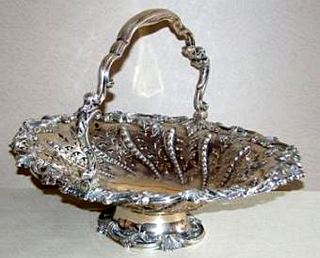
Various devices were adopted to assist the illusion of the goods being made entirely of silver. Patches of silver were fused onto objects so that coats-of-arms or silver crest marks could be engraved on them without the copper showing through. For objects such as serving plates or dishes, cups and beakers, ingots of copper plated with silver on both sides were used. The bottoms of silver salvers and trays and the insides of dish-warmers were given a coating of tin to hide the red of the copper. From about 1785, the edges of objects where the silver coating was likely to be worn away and the copper to show through were given special coverings of silver. This method was particularly perfected by Matthew Boulton whose silverplated wares sometimes bore the additional stamp “SILVER BORDERS”.
In 1830 Samuel Roberts took out an important patent. This provided for the introduction of a layer of German silver (now known as Nickel Silver) or other white metal alloy between the silver layer and the copper ingot, once again so that the wearing away of the silver should not be as noticeable. Roberts had been very quick to take advantage of the new invention, an alloy of nickel, copper and zinc, the first sample of which was brought to Sheffield from Berlin in 1830. This alloy was originally a Chinese invention and as early as the 1820s, Edward Thomason of Birmingham had been experimenting in order to find out its component parts. At first, the new alloy proved too brittle for use as a replacement for the copper ingot, but, by 1836, an improved version known as "Argentine" had been perfected and this quickly came into use among all the leading manufacturers as a replacement for copper. The white color of the alloy meant that a thinner layer of silver could be used, which then made the end product cheaper.
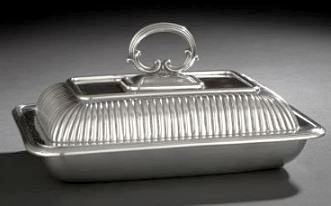
This was an important factor for English manufacturers, especially as from 1820 onwards, a considerable number of very inexpensive plated articles from France came on to the English market and also competed with English goods in the export market. French goods were made of copper of a deeper red than that used by English manufacturers. They were covered with a much thinner layer of silver and they lacked such refinements as silver edges.
The Sheffield plate industry was characterized by a large number of firms, which were constantly changing their names as new partners were brought in or as smaller firms were acquired by more prosperous larger companies. Most of them made silver as well as plated goods. Amongst prominent firms in the beginning of the Victorian era, were Thomas Bradbury & Sons and James Dixon & Co., both of which survived for a long time. Other important Sheffield silver firms in the first half of the nineteenth century were T. & J. Creswick, I. & I. Waterhouse & Co., Padley, Parkin & Co., Henry Wilkinson & Co., Roberts, Smith & Co. (which became Smith, Sissons & Co., in 1848), Gainsford & Nicholson, and Hawkesworth, Eyre & Co. In previous years marks on Sheffield silver plate had sometimes been registered at the Sheffield Assay Office, but after 1836 this practice was for the most part discontinued. For example, an open hand was used from 1837 by Padley, Parkin & Co., of Watson Walk. Later this mark was often used on electroplated wares and by the end of the century had been adopted by T. Bradbury & Sons. From 1836, a silver mark of crossed keys was used by Henry Wilkinson & Co. The crown was a fairly common silver mark, used by I. & I. Waterhouse & Co., by T. & J. Creswick and by two Birmingham firms, Thomasons (later G. R. Gollis) and J. Willmore. The mark of a globe and cross was used by Hawkesworth, Eyre & Co., and T. & J. Creswick also used a silver mark of a series of crossed arrows.
At the beginning of the Victorian era, the most important firm producing Sheffield silver plate in Birmingham was still the Soho Manufactory, which had been founded in 1762 by Matthew Boulton in partnership with John Fothergill. In 1837, this Silver Manufactory was in the hands of Matthew Robinson Boulton, the son of the original Boulton. He died in 1842 and the Manufactory was taken over by his son, M.P.W. Boulton, but in 1848 it ceased to operate and the dies were sold off. Some of the dies were bought by Bradburys and were still in their possession in 1911.
Silver marks from these companies are included in our marks4silver section of our marks4antiques.com research website.
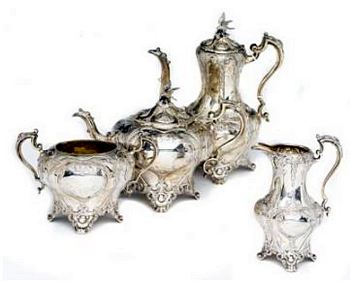
In general, Sheffield silver-plated goods in the 1830s and 1840s tended to lag behind Sterling Silverware in design. This was probably a consequence of the fact that dies were expensive to make and manufacturers went on using them as long as possible. For example, the Melon Pattern was still being widely made in the 1830s. Decoration normally consisted of stamped moldings and edgings and flat chasing and engraving. Pierced work, which was often stamped out by mechanical punches, remained popular. Bradburys’ designs are typical of this period, including pierced Gothic silver salt-cellars, snuffer trays and silver candlesticks with careful Rococo ornaments, silver epergnes decorated with acanthus leaves and scrolls, and silver tea and coffee sets in elaborate lobed shapes, also in the Rococo style. Silver salvers were frequently decorated with elaborate engraved Rococo scrolls and flowers.
Unlock the true value
of your collection with our comprehensive research guides from identifying makers' marks to appraising all kinds of
antiques and collectibles.
Our up-to-date information will give you an accurate understanding of your items' worth. Don't miss out on this
valuable resource - visit our research tools today!
Search our price guide for your
own treasures

